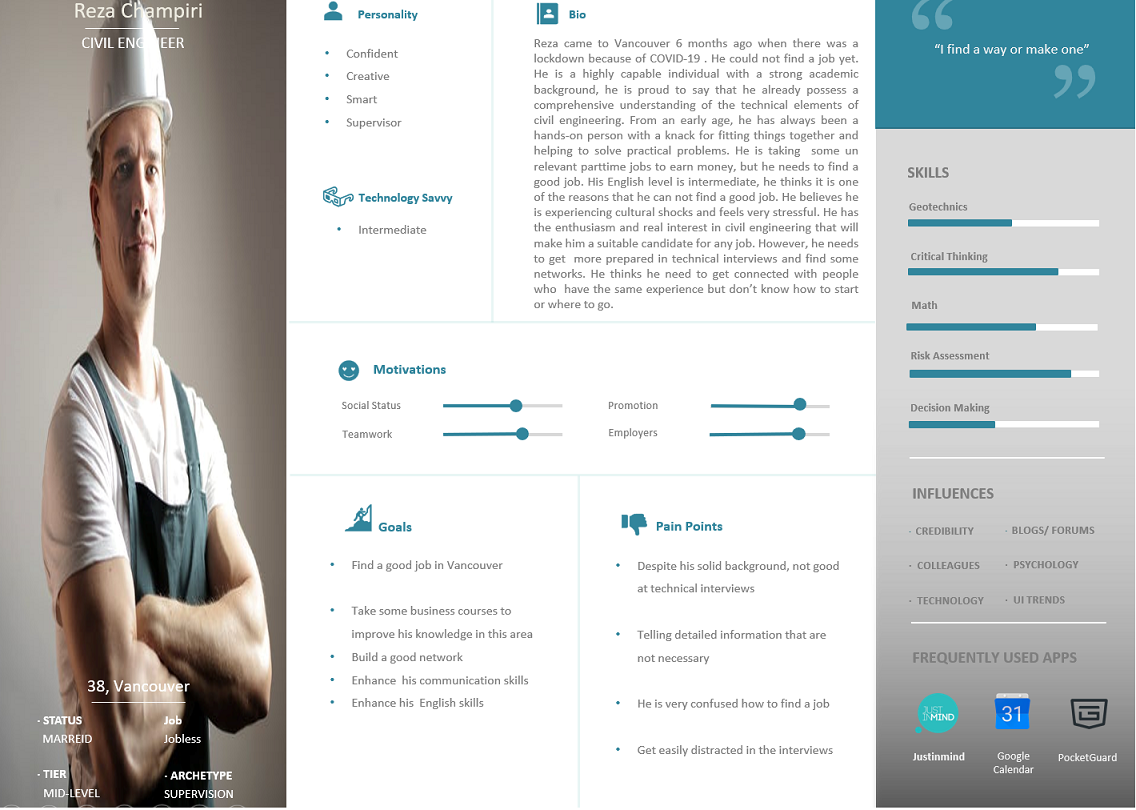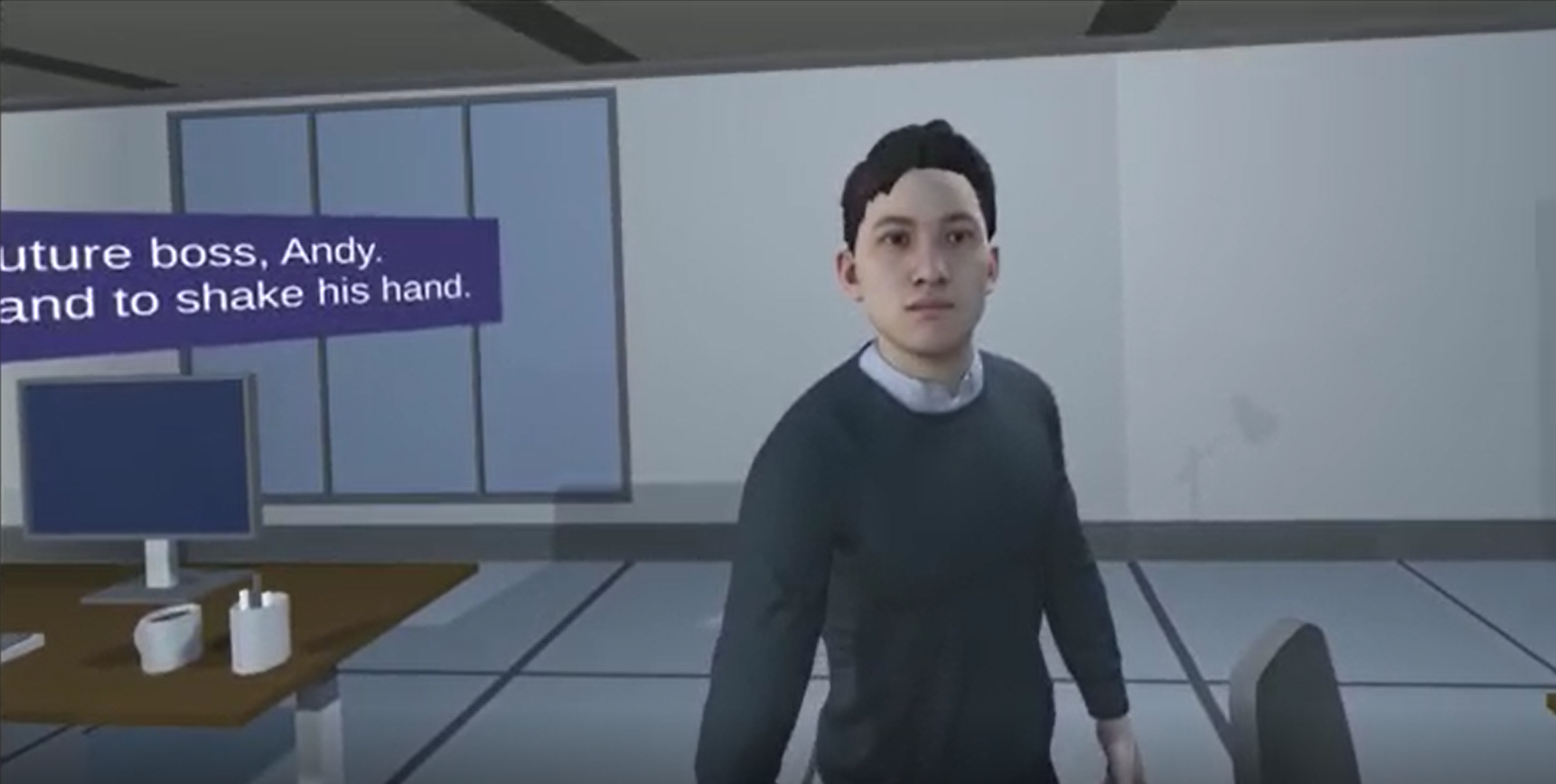VRSET
VR Speech Exposure Therapy
Ideation & Problem
VR Speech Exposure Therapy (VRSET) is a functional prototype of my final group project for the course of UX in Virtual Reality at SFU. VRSET has three main objectives.
- Provide a controlled practice environment for users by creating a single-player application, the users enter a private environment that doesn’t involve outside judgement.
- Reduce job interview anxiety among users through prolonged exposure and using the basic principles of exposure therapy.
- Help users build self-confidence through practicing in a realistic scenario that is easily accessible through a single application.
User Research & Solution

The above mentioned photo was one of our user personas. We investigated how might we leverage VR technology to offer a more realistic simulated interview environment to help job seekers practice before and interview, overcome interview anxiety and improve their overall job search success rate?
Key demographics:
-
Age range: 25-38
-
Gender: 60% female 40% male -> opportunity to target women specifically? (studies showing that women tend to be more nervous for interviews than men in professional settings)
-
Common occupations: full time student, new graduate, (newcomers to Canada?)
Key psychographics:
-
Likes to be prepared for everything
-
Gets self-conscious very easily, anxious in selection interview processes
-
Overachiever
Design & Wireframing

After conducting some user research and surveying a group of young adults, it became apparent that typically, the physical surroundings and experience of facing a stranger in a formal setting was identified as the most intimidating factor in the job interview process. When creating our prototype, we therefore placed more focus on developing the physical setting and experience within the virtual reality environment, and less on the specifics of the interview questions/format. Below is a breakdown of the main features/components of our application: 1) Lobby 2) Introduction 3) One-on-one Interview 4) Team Introduction
Evaluation & Testing
In the future, we hope to include additional onboarding features such a selecting level of difficulty, height adjustments, as well as customizable rooms for the job interview. In addition, we hope to provide “pause” and “play” buttons during the simulation as well as a catalogue of tips and tricks to combat job interview anxiety. With this new added feature, users would have the capability of pausing the simulation to practice deep breathing and leverage other coping mechanisms before continuing on with the interview. Finally, we hope to record and provide a hard copy of feedback along with a transcript of each interview session so users have the capability to evaluate their own performance, free of judgement.
